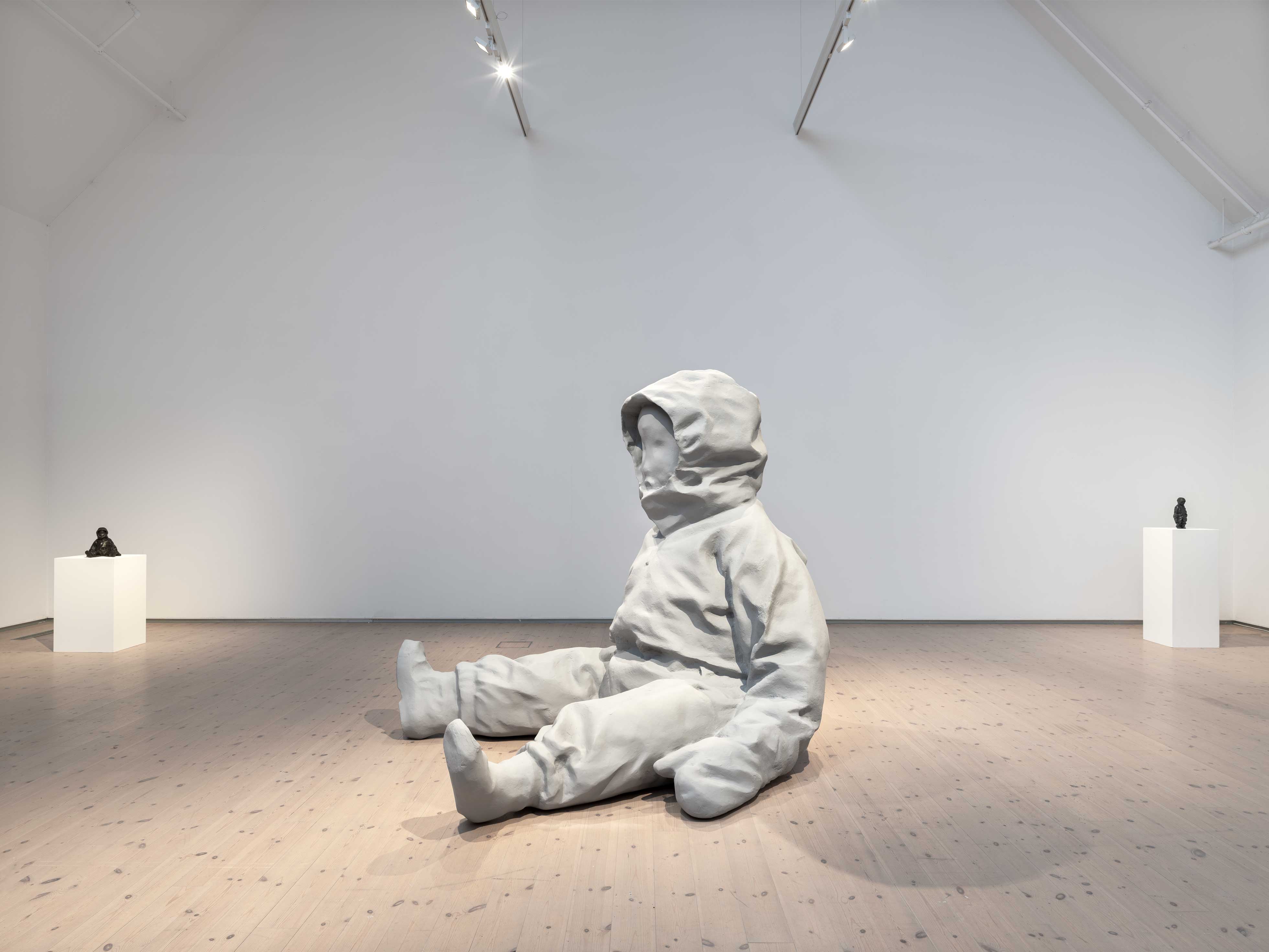

Charlotte Gyllenhammar’s art moves actively between subjects such as identity, fragility and transformation. She examines what it means to be human, thrown out into a reality we do not control, neither in terms of which family nor which society we grow up in. She constantly carries with her the child’s consciousness and way of looking at the outside world.
Gyllenhammar’s art is multifaceted, which for examples expresses itself in her titles, for instance. The name of this exhibition alludes to the ambiguity of kasta, an Old Norse word from which the English cast originates. Cast is most often used in the sense of throwing but also in expressions relating to sight and change: cast light on, cast a shadow, cast off, cast back or cast about.
In English, cast means both to throw and to mold. A central work in the exhibition is the film Cast, in which a woman rotates on a podium. Out of the darkness appear figures who throw plaster on her. The woman gradually transforms into a solidified image, a mold. The plot is ambivalent and consists of both a violent attack and a beautiful sculptural act.
Reversing perspectives is recurring in Gyllenhammar’s practise. In her public breakthrough in 1993, with the work Die for You, she hung an oak with the root up and the crown down over Drottninggatan in central Stockholm. Here at Vandalorum, several works are shown where human figures are turned upside down, in positions that make them vulnerable and fragile but also contain beauty and wonder.
Gyllenhammar often portrays women and children, figures who have been marginalized in art history. Her sculpted children are dressed in thick, limiting garments that provide protection from the outside world but also make the wearers enigmatic. By reproducing them in different scales — from miniatures to monumental giants — Gyllenhammar changes perspective, once again.
Gyllenhammar (b. 1963 in Gothenburg) is educated at the Royal College of Art in London and the Royal Institute of Art in Stockholm. She has created several public artworks and is represented in the collections of for example Kiasma in Helsinki, Moderna Museet in Stockholm, Wanås Konst in Knislinge and the National Museum of Women in the Arts in Washington DC.
Thanks to: the Swedish Arts Council, Region Jönköping County and Värnamo Municipality as well as Vandalorum's Partners.
Photo: Patrik Lindell